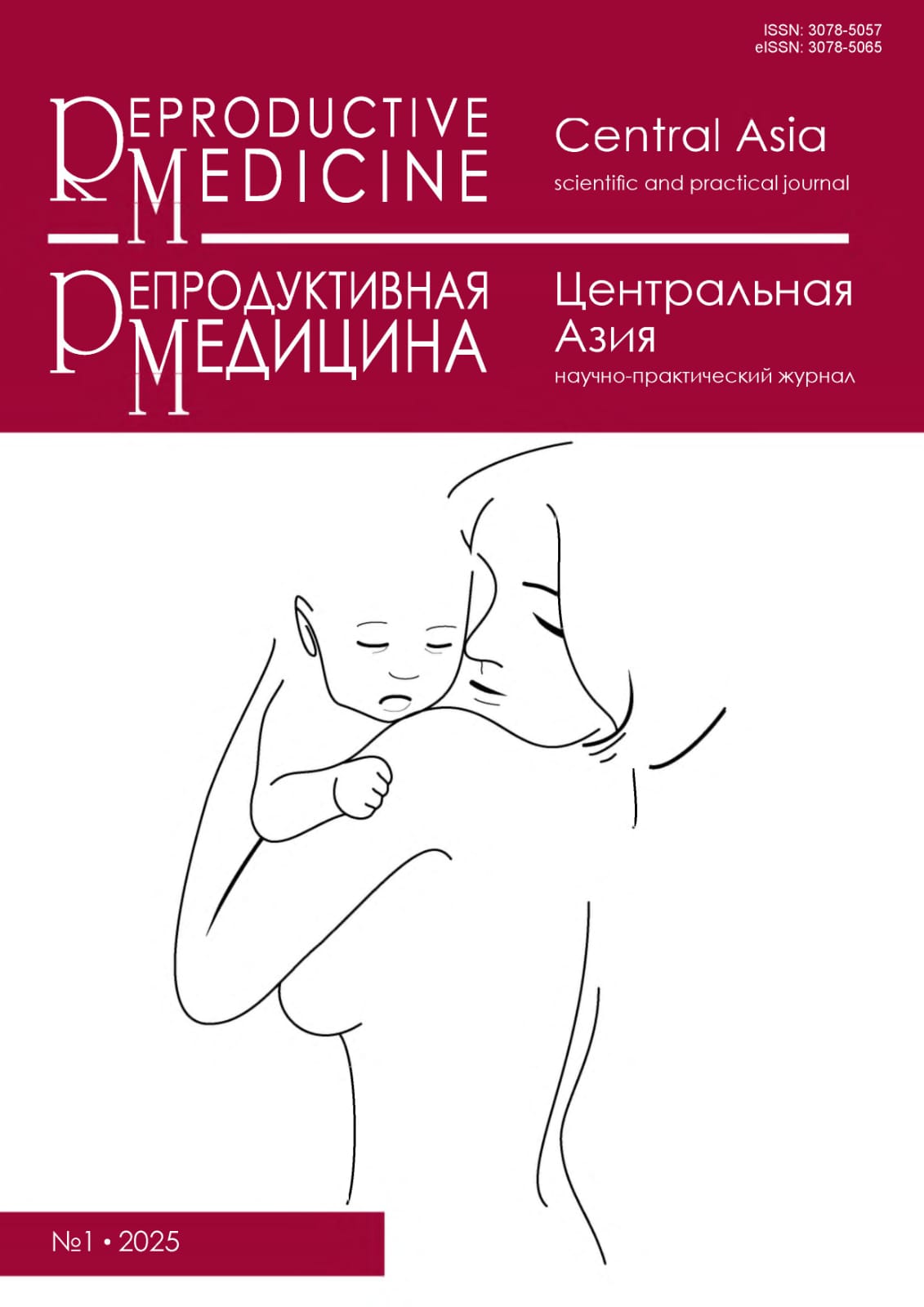Шала туған балалардың тыныс алу жағдайын тұрақтандырудағы аз инвазивті технологиялар: әдебиетке шолу
DOI:
https://doi.org/10.37800/RM.1.2025.459Кілт сөздер:
шала туған балалар, тыныс жеткіліксіздігі, аз инвазивті технологиялар, LISA, өкпенің ультрадыбыстық зерттеуі, жүректің ультрадыбыстық зерттеуі, азот оксидін ингаляциялауАңдатпа
Өзектілігі: Шала туылған нәрестелердің жоғары жиілігі денсаулық сақтаудың негізгі проблемасы болып қала береді, өйткені олар арнайы күтімді қажет етеді. Өмірдің алғашқы минуттарында жағдайды тұрақтандыру аман қалу мен денсаулық үшін өте маңызды.
Бұл әдебиетті шолу шағын инвазивті технологияларды қолдана отырып, шала туылған нәрестелердің тыныс алу жағдайын тұрақтандыруға бағытталған. Қыздырылған және ылғалдандырылған жоғары ағынды мұрын канюлясы, LISA (аз инвазивті беттік-белсенді заттарды енгізу), өкпе ультрадыбыстық зерттеуі, жүректің ультрадыбыстық зерттеуі (Point-of-Care Ultrasound, POCUS), электрокардиография және ингаляциялық азот оксиді сияқты әдістер тыныс алу жолдарының асқынуларын азайтып, ұзақ мерзімді нәтижелерді жақсартады.
Зерттеу мақсаты – әдеби дереккөздерді талдау және туғаннан кейін көп ұзамай шала туылған нәрестелерде аз инвазивті технологияларды қолдану арқылы тыныс алу жағдайын тұрақтандырудың заманауи тәсілдеріне түсініктеме беру, сондай-ақ оларды неонаталдық тәжірибеде қолданудың жеткіліксіз зерттелген аспектілерін анықтау.
Материалдар мен әдістер: 2014-2024 жылдарға арналған PubMed, Scopus, Web of Science, eLibrary ғылыми көздеріне шолу жасалды. Тыныс алуды қолдаудың аз инвазивті әдістерінің тиімділігін бағалайтын зерттеулер таңдалды.
Нәтижелер: Талдау аз инвазивті технологиялар ұзақ оттегімен қанықтыруға, бронх-өкпелік дисплазия мен интравентрикулярлық қан кету жиілігін азайтуға және жүрек-тыныс алу бұзылыстарын дәл диагностикалауға ықпал ететінін растады.
Қорытынды: Минималды инвазивті технологияларды қолдану инвазивті араласу қажеттілігін азайтады, өмір сүру ұзақтығын арт
тырады және шала туылған нәрестелердің ұзақ мерзімді нәтижелерін жақсартады, бұл жеке тәсілді қажет етеді.
Библиографиялық сілтемелер
World Health Organization. Preterm birth. 2020 [cited 2025 Mar 13]. Available from:
https://www.who.int/news-room/fact-sheets/detail/preterm-birth
Stoll BJ, Nellie I Hansen, Edward F Bell, Seetha Shankaran, Abbot R Laptook, Michele C Walsh, Ellen C Hale, Nancy S Newman, Kurt Schibler, Waldemar A CarloShampa Saha, Abhik Das, Rosemary D Higgins; Eunice Kennedy Shriver National Institute of Child Health and Human Development Neonatal Research Network. Neonatal Outcomes of Extremely Preterm Infants from the NICHD Neonatal Research Network. Pediatrics. 2015;135(1):1-9.
https://doi.org/10.1542/peds.2009-2959
Lemyre B, Laughon M, Bose C, Davis PG. Early nasal intermittent positive pressure ventilation (NIPPV) versus early nasal continuous positive airway pressure (NCPAP) for preterm infants. Cochrane Database Syst Rev. 2023; CD005384.
https://doi.org/10.1002/14651858.CD005384.pub2
Berbenetz N, Wang Y, Brown J, Godfrey C, Ahmad M, Vital FMR, Lambiase P, Banerjee A, Bakhai A, Chong M. Non-invasive ventilation for preterm infants. Cochrane Database Syst Rev. 2016;2016(3).
https://doi.org/10.1002/14651858.CD005351.pub4
Kurepa D, Perveen S, Lipener Y, Kakkilaya V. The use of less invasive surfactant administration (LISA) in the United States with review of the literature. J Perinatol. 2019;39(7):426-432.
https://www.nature.com/articles/s41372-018-0302-9
Gregorio-Hernández R, Pérez-Pérez A, Alonso-Ojembarrena A, Arriaga-Redondo M, Ramos-Navarro C, Sánchez-Luna M. Neonatal pneumothoraces with atypical location: the role of lung ultrasound. Eur J Pediatr. 2022;181:1751-1756.
https://link.springer.com/article/10.1007/s00431-021-04329-z
Barrington KJ, Finer N, Pennaforte T, Altit G. Nitric oxide for respiratory failure in infants born at or near term. Cochrane Database Syst Rev. 2017;2017(1):CD000399.
https://doi.org/10.1002/14651858.CD000399.pub3
Kanevska U, Guczynska E. The impact of surfactant administration techniques (LISA vs INSURE) on the outcomes of treatment for respiratory distress syndrome in preterm infants. Dev Period Med. 2019;23(3):163-171.
https://doi.org/10.34763/devperiodmed.20192303.163171
Mansouri S, Servatyari K, Rahmani K, Sheikhahmadi S, Hemmatpour S, Eskandarifar A, Rahimzadeh M. Comparison of Two Surfactant Administration Techniques (LISA vs INSURE) in Preterm Infants with Respiratory Distress Syndrome: A Retrospective Cohort Study. J Neonatal Perinat Med. 2024;17(2):123-131.
https://doi.org/10.3233/npm-230194
Mishra A, Joshi A, Londhe A, Deshmukh L. Comparison of Two Surfactant Administration Techniques (LISA vs InSurE) in Preterm Infants with Respiratory Distress Syndrome: A Randomized Controlled Trial. Pediatr Pulmonol. 2023;58(3):738-745.
https://doi.org/10.1002/ppul.26246
Zamal A, Sk MH, Saha B, Hazra A. Comparison of efficacy between beractant and poractant alfa in respiratory distress syndrome among preterm infants (28–33+6 weeks gestational age) using the less invasive surfactant administration (LISA) technique: A randomized controlled trial. J Perinatol. 2024 Apr 12. Epub ahead of print.
https://doi.org/10.1038/s41372-024-01962-y
Dini G, Santini MG, Celi F. Less Invasive Surfactant Administration (LISA) Versus INSURE Method in Preterm Infants: a Retrospective Study. Med Arch. 2024;78(2):112-116.
https://doi.org/10.5455/medarh.2024.78.112-116
Buyuktiryaki M, Alarcon-Martinez T, Simsek GK, Canpolat FE, Tayman C, Oguz SS, Kutman HGK. Five-year single center experience on surfactant treatment in preterm infants with respiratory distress syndrome: LISA vs INSURE. Early Hum Dev. 2019;135:32-36.
https://doi.org/10.1016/j.earlhumdev.2019.06.004
Oktem A, Yigit S, Oğuz B, Celik T, Haliloğlu M, Yurdakok M. Accuracy of lung ultrasonography in the diagnosis of respiratory distress syndrome in newborns. J Matern Fetal Neonatal Med. 2021;34(2):281-286.
https://doi.org/10.1080/14767058.2019.1605350
Liu J, Cao H, Liu Y. Lung ultrasonography for the diagnosis of neonatal respiratory distress syndrome: a pilot study. Zhonghua Er Ke Za Zhi. 2013;51(3):205-210.
https://pubmed.ncbi.nlm.nih.gov/23751583/
Jing Liu, Ying Liu, Hua-wei Wang, Jing-ya Li, Tao Han, Jing Liang, Chang-shuan Yang, Meng Xing, Zhi-chun Feng. Lung ultrasound for diagnosis of neonatal atelectasis. Zhonghua Er Ke Za Zhi. 2013 Sep;51(9):644–648. [Article in Chinese]. PMID: 24330981.
https://pubmed.ncbi.nlm.nih.gov/24330981/
Sefic Pasic I, Riera Soler L, Vazquez Mendez E, Castillo Salinas F. Comparison between lung ultrasonography and chest X-ray in the evaluation of neonatal respiratory distress syndrome. J Ultrasound. 2023;26(2):435-448.
https://doi.org/10.1007/s40477-022-00728-6
Copetti R, Cattarossi L, Macagno F, Violino M, Furlan R. Lung ultrasound in respiratory distress syndrome: a useful tool for early diagnosis. Neonatology. 2008;94(1):52-59.
https://doi.org/10.1159/000113059
Alonso-Ojembarrena A, Gregorio-Hernández R, Raimondi F. Neonatal point-of-care lung ultrasound: what should be known and done out of the NICU? Eur J Pediatr. 2024;183(4):1555-1565.
https://doi.org/10.1007/s00431-023-05375-5
Nemes AF, Toma AI, Dima V, Serboiu SC, Necula AI, Stoiciu R, Ulmeanu AI, Marinescu A, Ulmeanu C. Use of Lung Ultrasound in Reducing Radiation Exposure in Neonates with Respiratory Distress: A Quality Management Project. Medicina (Kaunas).
;60(2):308.
https://doi.org/10.3390/medicina60020308
Myers F, Dasani R, Tong J, Vallandingham-Lee S, Manipon C, Dahlen A, De Luca D, Singh Y, Davis AS, Chock VY, Bhombal S. Point of-care lung ultrasound for continuous positive airway pressure discontinuation in preterm infants. J Perinatol. 2025;45(1):68-72.
https://doi.org/10.1038/s41372-024-02157-1
Amer R, Rozovsky K, Elsayed Y, Bunge M, Chiu A. The utility of point-of-care ultrasound protocol to confirm central venous catheter placement in the preterm infant. Eur J Pediatr. 2023;182(11):5079-5085.
https://doi.org/10.1007/s00431-023-05172-0
Fernández LR, Hernández RG, Guerediaga IS, Gato JM, Fanjul JR, Bilbao VA, Quintela PA, Ojembarrena AA; Pulmonary Ultrasound Section of the Neonatal Ultrasound Working Group of the Spanish Society of Neonatology. Usefulness of lung ultrasound in the diagnosis and follow-up of respiratory diseases in neonates. An Pediatr (Engl Ed). 2022;96(3):190-198.
https://doi.org/10.1016/j.anpedi.2022.01.002
Kotidis C, Wertheim D, Weindling M, Rabe H, Turner MA. Assessing patent ductus arteriosus in preterm infants from standard neonatal intensive care monitoring. Eur J Pediatr. 2022;181(3):1117-1124.
https://doi.org/10.1007/s00431-021-04311-9
Isayama T, Kusuda S, Reichman B, Lee SK, Lehtonen L, Norman M, Adams M, Bassler D, Helenius K, Hakansson S, Yang J, Jain A, Shah PS; International Network for Evaluating Outcomes of Neonates (iNeo) Investigators. Neonatal Intensive Care Unit-Level Patent Ductus Arteriosus Treatment Rates and Outcomes in Infants Born Extremely Preterm. J Pediatr. 2020;220:34-39.e5.
https://doi.org/10.1016/j.jpeds.2020.01.069
Sahni R, Ameer X, Ohira-Kist K, Wung J-T. Non-invasive inhaled nitric oxide in the treatment of hypoxemic respiratory failure in term and preterm infants. J Perinatol. 2017;37(1):54-60.
https://doi.org/10.1038/jp.2016.164
Barrington KJ, Finer N. Inhaled nitric oxide for respiratory failure in preterm infants. Cochrane Database Syst Rev.
;12:CD000509.
https://doi.org/10.1002/14651858.CD000509.pub4
DiBlasi RM, Dupras D, Kearney C, Costa E Jr, Griebel JL. Nitric oxide delivery by neonatal noninvasive respiratory support devices. Respir Care. 2015;60(2):219-230.
Жүктеулер
Жарияланды
Дәйексөзді қалай келтіруге болады
Журналдың саны
Бөлім
Лицензия
Авторлық құқық (c) 2025 Жариялауға қабылданған қолжазбаға құқықтар журналдың баспагеріне беріледі. Материалдың толық немесе бір бөлігін қайта басып шығару кезінде автор осы журналдағы негізгі басылымға сілтеме жасауы керек.

Бұл жұмыс Creative Commons Attribution-NonCommercial-NoDerivatives 4.0 бүкіл әлем бойынша .
Осы журналда жарияланған мақалалар тек коммерциялық емес пайдалануды қарастыратын CC BY-NC-ND 4.0 (Creative Commons Attribution - Non Commercial - No Derivatives 4.0 International) лицензиясы бойынша лицензияланады. Бұл лицензия бойынша пайдаланушылар авторлық құқықпен қорғалған материалды көшіруге және таратуға құқылы, бірақ оларды коммерциялық мақсатта өзгертуге немесе пайдалануға рұқсат етілмейді. Лицензиялау туралы толық ақпаратты https://creativecommons.org/licenses/by-nc-nd/4.0/ сайтында алуға болады.




